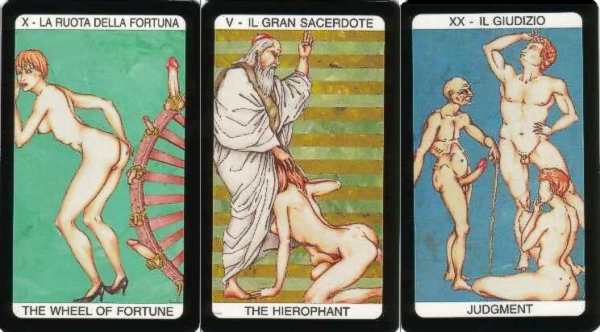|
Rotten Library > The Occult > Tarot
Tarot Cards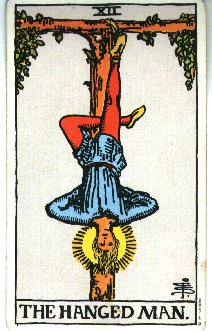 Madame Sosostris, famous clairvoyante,
Madame Sosostris, famous clairvoyante,Had a bad cold, nevertheless Is known to be the wisest woman in Europe, With a wicked pack of cards. Here, said she, Is your card, the drowned Phoenician Sailor, (Those are pearls that were his eyes. Look!) Here is Belladonna, the Lady of the Rocks, The lady of situations. Here is the man with three staves, and here the Wheel, And here is the one-eyed merchant, and this card, Which is blank, is something he carries on his back, Which I am forbidden to see. I do not find The Hanged Man. Fear death by water. — T.S. Eliot, "The Wasteland" Most people associate tarot cards with vague images of grim-faced gypsies making ominous pronouncements. However, it would be more correct to imagine grim-faced Italians making ominous pronouncements.Tarot cards, as best anyone can tell, originated in Italy around the 15th century. However, the phrase “as best as anyone can tell" encompasses a pretty large body of conflicting opinions. Here’s what we know for sure: Renaissance Italians played a card game called tarrochini, which involved a deck of cards that looks a lot like what most people would call a “tarot deck” today. The cards were used for a vaguely bridge-like game by the same name, as well as (more discreetly) being used for fortune-telling.
The art of divination, or fortune-telling, certainly dates back much further than the 15th century. The Chinese were among the earliest innovators of divination, employing a ancient system of sticks and coins known as the I-Ching. By 1000 A.D., the Chinese were using cards for divination, both within and without the I-Ching framework. The I-Ching was less of a fortune-telling device than a sort of metaphysical “Dear Abbey” — readings tend to offer advice and guidelines for right living rather than “you will meet a tall dark stranger.” (This is, of course, a gross and insulting simplification of what the I-Ching actually does and is, but then this article is about tarot cards.) Other fortune-telling traditions date back as far as the ancient Egyptians.
Certain brands of fuzzy, white-light New Agers like to claim that tarot dates back to ancient Egypt, the Knights Templar, Atlantis, ancient alien charioteers, etc., etc. These claims have various levels of credibility, depending on largely on what you're willing to believe. Eventually, tarot cards did find their way into the hands of the gypsies they are so famously associated with, but that didn't happen until the 20th century. Origins aside, the tarot uses an extremely complex series of images and attributes to decode the currents of past, present and future. Based in equal parts on hermetic magical traditions, astrology and Judeo-Christian mythology, the web of images and allusions lends itself to the interpretative imagination.
The Minor Arcana are more or less the same as a modern deck of playing cards, with four suits, numbered cards (from Ace to 10) and face cards. The suits are cups, coins, swords and staves, which correspond to hearts, diamonds, spades and clubs. The face cards include the king, queen, knight (equivalent to the jack in a modern deck) and the page. Each suit corresponds to one of the traditional alchemical elements — earth, air, fire and water, which are also used to align the cards with astrological symbols. Some tarot decks have little vignettes pictured on the minor arcana, others arrange symbols in various geometric patterns. The images are based along Jungian archetypes, designed to be evocative and to have certain universal connotations (universal to Western culture, anyway).
In recent years, the American obsession with all things "New Age" (which generally means really old things that have been completely reinvented by flaky poseurs) has led to a proliferation of tarot and fortune-telling decks, found as easily at Barnes & Noble as in a dusty occult shop. Modern tarot deck designs range from unimaginative tracings of the Waite deck to naked porno decks (including the aptly named "Tarot of the Erotic Garden of Penises," pictured below), and a wide range of happy-sunshine-bliss-bliss products that can feature fairies, dragons, elves, Wiccans, samurai, druids, angels and/or baseball players.
|
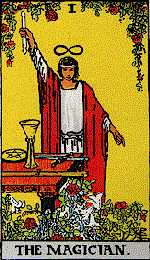 Everyone is pretty sure that these cards didn't just spring into existence fully formed and overnight, but no one has any really credible evidence to suggest its precise previous lineage.
Everyone is pretty sure that these cards didn't just spring into existence fully formed and overnight, but no one has any really credible evidence to suggest its precise previous lineage. 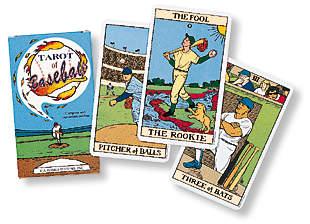 Dice, goat innards, cloud shapes and voices in the head have been used to foretell the future for as long as there has been a future. The key attribute of a divination tool is that it needs to be random but still suggest a pattern. Once people started making decks of cards, they were worked into the mix.
Dice, goat innards, cloud shapes and voices in the head have been used to foretell the future for as long as there has been a future. The key attribute of a divination tool is that it needs to be random but still suggest a pattern. Once people started making decks of cards, they were worked into the mix. 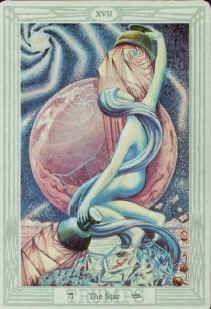 The actual tarot deck is traditionally made up of 22 trump cards known as the Major Arcana. These are the images that most people associate with tarot, such as The Magician, the High Priestess, the Hanged Man, the Wheel of Fortune and Death. The structure of the major arcana appears to have been based on the Tree of Life diagram from the Kaballah, a collection of Jewish mystical-occult teachings.
The actual tarot deck is traditionally made up of 22 trump cards known as the Major Arcana. These are the images that most people associate with tarot, such as The Magician, the High Priestess, the Hanged Man, the Wheel of Fortune and Death. The structure of the major arcana appears to have been based on the Tree of Life diagram from the Kaballah, a collection of Jewish mystical-occult teachings. 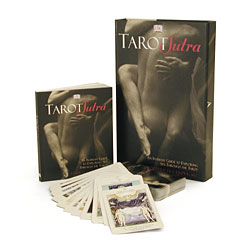 The most famous traditional Tarot deck was designed by A.E. Waite, leader of the Golden Dawn, an offshoot of
The most famous traditional Tarot deck was designed by A.E. Waite, leader of the Golden Dawn, an offshoot of 